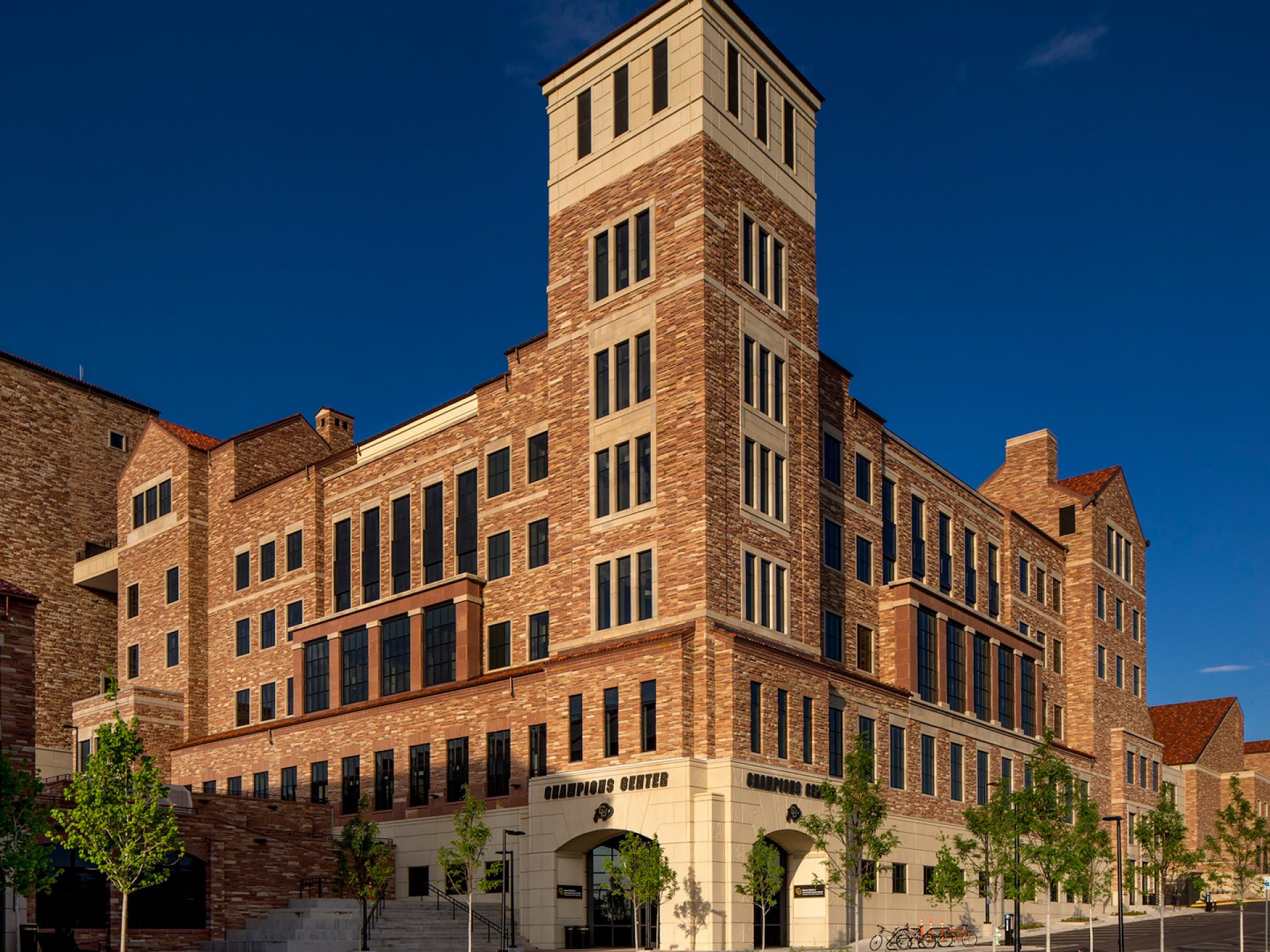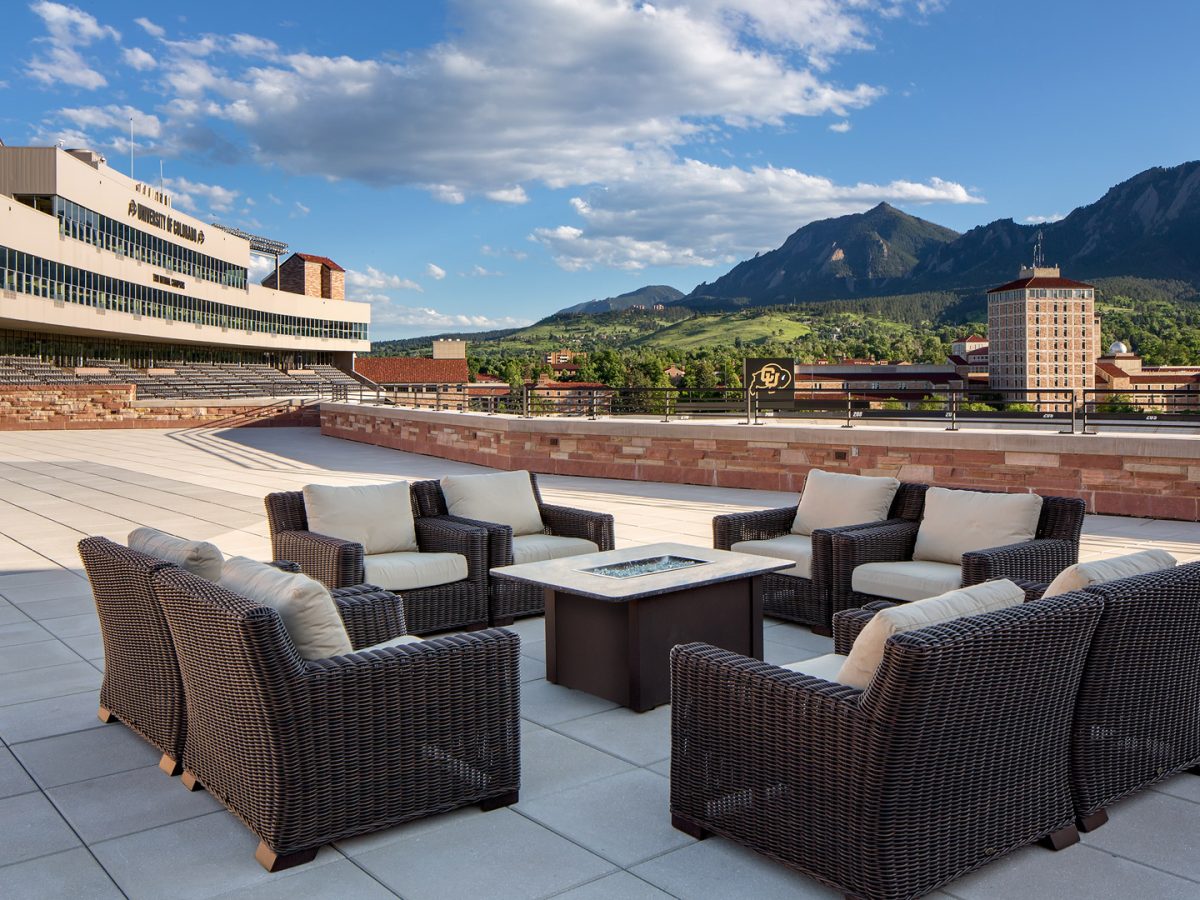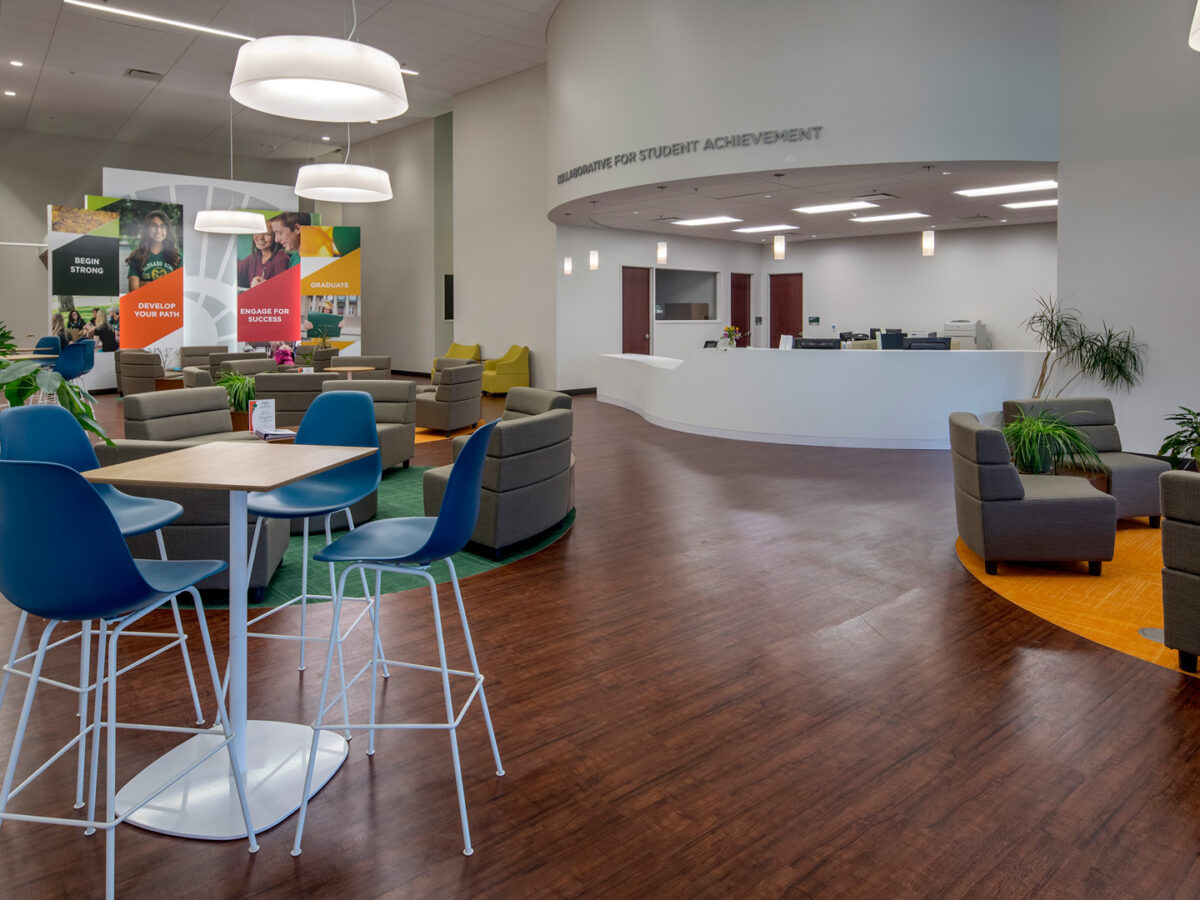March 27, 2019
Designing Collegiate Facilities for Year-round Revenue

Sitting beneath the Flat Irons, Folsom Field at the University of Colorado provides a game day view like no other in collegiate football. You can feel the raw energy on Saturdays each fall, but the unforgettable experiences extend beyond the Buffs’ six home games.
Together with CU, we took a forward-thinking approach to generating revenue when designing its Champions Center. Daily events are filling the athletic department’s Populous-designed spaces with activity and revenue on a year-round basis.
With proper planning and design, your projects can create new revenue streams by maximizing opportunities for non-game day events. Our design process seeks enhanced fan experiences and unique offerings that you can monetize daily. It also delivers new brand touchpoints for your fans along the way.
Here’s a trio of proven methods for accomplishing the goal of year-round revenue:
Develop Stadiums for Daily Use
In the past, collegiate stadiums have often overflowed with activity on game day and sat idle the rest of the calendar year. Universities now realize the appeal of these venues as gathering places extends well beyond the game on the field. Your fans crave connection year-round.
You can start to deliver those experiences to your fans by hosting a wide variety of events in your facility, from corporate get-togethers to daily dining. We designed Baylor University’s McLane Stadium to do just that.
Take the Baylor Club, for example. You wouldn’t necessarily think of a 45,000-seat stadium when making Easter brunch plans, but where else would the meal come with a panoramic view of the Brazos River or the Bears’ playing field?
According to the Waco Tribune-Herald, the in-stadium restaurant and event space brought in $2.4 million in its first year in 2014, nearly $1 million more than expected.
Design Revenue Generation into Training Facilities
Training facilities attract recruits, help unlock student-athletes’ potential and can lead to more success on the field, which can ultimately translate into increased revenue. All of that takes time, however. How do you design a facility that starts paying dividends immediately?
For an example, we look back to Boulder, where according to the Boulder Daily Camera, the athletic department’s spaces and in-house events team bring in annual six-figure profits. Events like weddings take advantage of the priceless Rocky Mountain backdrop – and they do it from atop CU’s training facility.
Situated at the northeast corner of Folsom Field, the new Champions Center is the literal and figurative cornerstone of the university’s 2015 athletics complex expansion and renovation. Together with CU, we designed the multi-sport facility to not only service student-athletes but the campus and Colorado community partners.
“We knew we had to open up our facility to the broader Front Range more than six Saturdays a year,” says CU Athletic Director Rick George.
There are multiple lounges and entertainment spaces designed for hosting year-round events, including the 18,000-square-foot rooftop terrace, but the facility also generates revenue through an innovative healthcare partnership. A 27,000-square-foot high-performance sports medicine center is open to the public, treating elite student-athletes and local weekend warriors alike.
Combine Books with Brawn
The new on-campus stadium at Colorado State University adds another multipurpose dimension to it: academics.
With enrollment on the rise, the university desired additional classroom space. They were also looking to cost-effectively develop these facilities. The result is a stadium with two non-game day anchors:
- Located along the west sideline is the new state-of-the-art CSU Football Training Facility.
- Opposite it sits an 80,000-square-foot Alumni and Academic Center that spans the length of the east sideline.
Weaving together the two, along with innovative year-round gathering spaces like the New Belgium Porch, has helped the stadium generate $3.2 million more than projections since opening last fall, according to The Coloradoan.
Revenue Streams Collide
Regardless of their scale, developing spaces that cater to non-game day activity produces two results: new revenue opportunities and new community touchpoints with your athletics brand.
But it’s not simply a case of “if you build it, they will come.” We must be deliberate and intentional when designing these spaces. Populous’ experience designing hundreds of similar spaces gives you a proven track record to depend on and sell to your stakeholders.
To start a dialogue with our designers, send us a note at info@populous.com.
Lorem ipsum dolor sit amet consectetur, adipisicing elit. Non facere corporis et expedita sit nam amet aut necessitatibus at dolore enim quis impedit eius libero, harum tempore laboriosam dolor cumque.
Lorem, ipsum dolor sit amet consectetur adipisicing elit. Illo temporibus vero veritatis eveniet, placeat dolorem sunt at provident tenetur omnis, dicta exercitationem. Expedita quod aspernatur molestias eum? Totam, incidunt quos.

